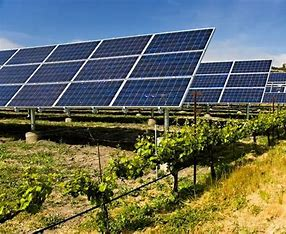With the aim to diversify its sources of electricity and provide savings for the city, its residents and businesses, Lebanon will be developing solar arrays on 37 acres of non-developable land within a floodplain situated in the city.
To this end, Lebanon Planning Commission has given consent towards building a $14.1 million solar array on undevelopable city-owned land that measures 37 acres in the floodplain near the Glosser Road substation.
As per reports, Lebanon Planning Commission, recently held a public hearing and voted to approve a request by the city and its consultant, Kokosing Solar, for a conditional use permit to construct three solar arrays.
The projected cost of the solar arrays will be reduced about 30% through a federal government direct-pay program.
As per the officials, the proposed $14.1 million project would help the city diversify its sources of electricity and provide savings for the city and its ratepayers. The solar panel farm will also be able to generate 10.1 megawatts of electricity for the city’s electric utility. The target operational start-up of the facility is expected in the fall of 2024.
It is expected that the 35-year project estimates a return on investment after 10 years and will diversify its electricity sources. The city owns and operates its own electric distribution network and is a member of the AMP-Ohio network.
Kokosing Solar recommended the city build and own its own fixed-tilt solar arrays, which is projected to cost about $14 million. Representatives noted that a federal program would pay the city about 30% of the cost, or more than $4.8 million, which would bring the cost down to $9.15 million.
Kokosing Solar officials said solar generation is a long-term hedge that diversifies the city’s energy portfolio with zero fuel-cost volatility.
If the city does not directly purchase the solar array, it would not be eligible for the federal direct-pay program. Kokosing Solar also estimated cost savings at $26.9 million over the 35-year lifespan of the arrays.
City Manager Scott Brunka said, “It’s a low-risk investment opportunity that diversifies energy sources. It will provide 3-4% of the city’s annual energy needs and it’s a good use of undevelopable land that will bring economic development opportunities.”


